43 what causes acid rain
What Are the 10 major Causes of Acid Rain ? - Soul and Land Acid rain Caused By Carbon Dioxide Caused By Deforestation Caused By Fossil Fuels Caused By Human Activity Caused By Industries Caused By Nuclear Radiation Caused By Pollution Caused By Soil Erosion Caused By The Burning Caused By Volcanoes Causes Causes of Acid Rain Javed Pasha previous post 12 Best Ways To Control Air Pollution next post Acid Rain - What is It? What Are Their Causes and ... Anthropogenic causes of acid rain include: industrial emissions heating systems energy production exhaust fumes Both nitrogen oxide and sulfur dioxide can cause acid rain. The gas released in the burning process ties with the water molecule in the atmosphere. That causes an acidification of the precipitation.
Acid Rain: What it is, Causes and Consequences - Iberdrola Acid rain is one of the consequences of air pollution. Gases produced from the burning of fuels react with the oxygen in the air and water vapour, transforming into acids that fall onto the earth's surface as rain. This acidification of the earth and surface water has devastating effects on ecosystems and poses a serious danger to living beings.

What causes acid rain
What Causes Acid Rain? - Green Matters What causes acid rain? As explained by the EPA, acid rain is the result of sulfur dioxide (SO2) and nitrogen oxides (NOX) being emitted into the atmosphere and subsequently transported by wind and air currents. These acidic compounds react with water, oxygen, and other atmospheric chemicals to form sulfuric and nitric acids, which then mix even ... Acid Rain and Water | U.S. Geological Survey The precursors, or chemical forerunners, of acid rain formation result from both natural sources, such as volcanoes and decaying vegetation, and man-made sources, primarily emissions of sulfur dioxide (SO 2) and nitrogen oxides (NO x) resulting from fossil fuel combustion. Which Gases Cause Acid Rain? (Detailed Explanation with FAQs) Acid rain is mostly caused by gaseous sulphur dioxide and gaseous nitrogen dioxide. These gases are produced as a by product from the combustion of fuels. In the atmosphere, sulphur dioxide is converted into sulphuric acid via an oxidation reaction. Nitrogen dioxide is transformed into nitric acid due to similar reactions in the atmosphere.
What causes acid rain. Acid Rain: Causes, Effects, and Solutions - ThoughtCo Acid rain is made up of water droplets that are unusually acidic because of atmospheric pollution, most notably the excessive amounts of sulfur and nitrogen released by cars and industrial processes. Acid rain is also called acid deposition because this term includes other forms of acidic precipitation (such as snow). Acid rain, explained | National Geographic Normal rain is slightly acidic, with a pH of 5.6, while acid rain generally has a pH between 4.2 and 4.4. Causes of acid rain. Rotting vegetation and erupting volcanoes release some chemicals that can cause acid rain, but most acid rain is a product of human activities. The biggest sources are coal-burning power plants, factories, and automobiles. It is caused by emissions of nitrogen oxide and sulfur dioxide, which react with water molecules in the atmosphere and produce acid rain. Acid rain has harmful effects on the environment, especially on aquatic animals and plants. It has also shown damaging effects on freshwaters, soils and insects. Stop Food Speculation! Acid Rain: Causes, Effects and Solutions to Increase in ... Acid rain generally leads to weathering of buildings, corrosion of metals, and peeling of paints on surfaces. Erupting volcanoes contains some chemicals that can cause acid rain. Apart from this, the burning of fossil fuels, the running of factories and automobiles due to human activities are a few other reasons behind this activity.
Acid rain, Definition, Causes, Sources, Formulas, Effects ... Nowadays, acid rain is a key global environmental issue. In this article, every ins and out of acid rain is discussed. The defination of acid rain, main causes of acid rain, harmful effects of acid rain, formation of acid rain, ph of acid rain, acid rain control measures etc. have been discussed in this post in detail. What Causes Acid Rain: Causes, Impact & Solutions - Utopia Acid rain is caused primarily by sulfur dioxide (SO2) and nitrogen oxide (NOx) emissions. When these gases react with the moisture in the atmosphere, sulfuric and nitric acids form. Wind may transport these acid particles over long distances before they come down as wet or dry deposition. › science › acid-rainacid rain | Definition, Causes, Effects, & Formulas | Britannica acid rain, also called acid precipitation or acid deposition, precipitation possessing a pH of about 5.2 or below primarily produced from the emission of sulfur dioxide (SO2) and nitrogen oxides (NOx; the combination of NO and NO2) from human activities, mostly the combustion of fossil fuels. In acid-sensitive landscapes, acid deposition can reduce the pH of surface waters and lower ... Acid rain: causes and effects - Canada.ca Acid rain occurs when acid-containing precipitation falls onto the earth's surface. Precipitation comes in the form of rain, snow, sleet, or hail. Precipitation collects acidic particles and gases and becomes acidic. These particles will have a pH level below 5.6. There are two types of deposition processes: wet and dry.
Effects of Acid Rain - US EPA Walking in acid rain, or even swimming in a lake affected by acid rain, is no more dangerous to humans than walking in normal rain or swimming in non-acidic lakes. However, when the pollutants that cause acid rain —SO 2 and NO X, as well as sulfate and nitrate particles— are in the air, they can be harmful to humans. The Causes of Acid Rain | Cuarl The biggest cause of acid rain are sulphates, an air pollutant that come primarily from coal-fuelled power plants and the burning of peat. Acid rain is caused by many other pollutants as well, which have varying effects on waters, fish and plant life. The most common cause of acid rain is the pollution caused by fossil fuels. Acid Rain | U.S. Geological Survey - USGS.gov BACKGROUND. Acid rain is the term commonly used by scientists to describe rain that is abnormally acidic. What does that mean? Well, plain distilled water, like that used in laboratories, is neutral (not acidic or basic). Since rain naturally has things dissolved in it, it will always be slightly acidic. Acid Rain - Chemicals, Causes and Environmental Effects Acid rain causes the corrosion of metals. For example, the formation of rust on iron gates and iron frames increases due to acid rain. Acid rain causes a very huge deterioration of the buildings and sculptural materials. The Taj Mahal in India faces this problem.
Acid Rain - Definition, Causes, Effects, Examples, Prevention ... Acid rain is caused by a chemical reaction that begins when compounds such as sulphur dioxide and oxides of nitrogen are released into the air. These substances can rise very high up into the atmosphere, where they mix and react with water, oxygen, and other chemicals to form more acidic pollutants called acid rain.
How to Prevent Acid Rain - Green Coast The main source of acid rain is human-caused burning of fossil fuels. Sulfur is a contaminant, principally of coal, oil, and diesel fuel, that is released when they're burned in power plants, homes, some cars, or construction vehicles. Once in air, sulfur combines with oxygen to form sulfur dioxide.
Acid rain facts and information - Environment Rotting vegetation and erupting volcanoes release some chemicals that can cause acid rain, but most acid rain is a product of human activities. The biggest sources are coal-burning power plants,...
What is Acid Rain? - US EPA Acid rain results when sulfur dioxide (SO 2) and nitrogen oxides (NO X) are emitted into the atmosphere and transported by wind and air currents. The SO 2 and NO X react with water, oxygen and other chemicals to form sulfuric and nitric acids. These then mix with water and other materials before falling to the ground.
Acid rain: Causes, effects and solutions Sulfur dioxide (SO2) and nitrogen oxides (NOx) released into the air by fossil-fuel power plants, vehicles and oil refineries are the biggest cause of acid rain today, according to the...
What causes acid rain? Acid rain is caused by a chemical reaction that begins when compounds like sulfur dioxide and nitrogen oxides are released into the air. These substances can rise very high into the atmosphere, where they mix and react with water, oxygen, and other chemicals to form more acidic pollutants, known as acid rain.
Causes of Acid Rain - University of Illinois Urbana-Champaign Acid rain is caused by the formation of nitric and sulfuric acids in our atmosphere. These compounds are strong acids and they are highly soluble in water and they dissolve in the water droplets within clouds.
What Are the Two Natural Causes of Acid Rain? - Brownfield ... Acid rain is rain that has an abnormally low pH level, indicating that it is particularly acidic. The release of hazardous particles into the atmosphere, such as sulfur dioxide (SO 2) and nitrogen oxide, causes acid rain (NO 2). These gases are removed from the air by falling into the soil or being absorbed by vegetation.
Primary Causes of Acid Rain | Earth Eclipse Primary Causes of Acid Rain Acid rain is formed by elevated levels of sulfur and nitric acids in the atmospheres that accumulate as a result of Nitrogen oxides (NOx) and Sulfur dioxides (SO2) emissions. Acid rain is a mix of atmospheric water molecules and dry depositions of Sulfur dioxides and Nitrogen oxides emitted from industries and vehicles.
Which Gases Cause Acid Rain? (Detailed Explanation with FAQs) Acid rain is mostly caused by gaseous sulphur dioxide and gaseous nitrogen dioxide. These gases are produced as a by product from the combustion of fuels. In the atmosphere, sulphur dioxide is converted into sulphuric acid via an oxidation reaction. Nitrogen dioxide is transformed into nitric acid due to similar reactions in the atmosphere.
Acid Rain and Water | U.S. Geological Survey The precursors, or chemical forerunners, of acid rain formation result from both natural sources, such as volcanoes and decaying vegetation, and man-made sources, primarily emissions of sulfur dioxide (SO 2) and nitrogen oxides (NO x) resulting from fossil fuel combustion.
What Causes Acid Rain? - Green Matters What causes acid rain? As explained by the EPA, acid rain is the result of sulfur dioxide (SO2) and nitrogen oxides (NOX) being emitted into the atmosphere and subsequently transported by wind and air currents. These acidic compounds react with water, oxygen, and other atmospheric chemicals to form sulfuric and nitric acids, which then mix even ...

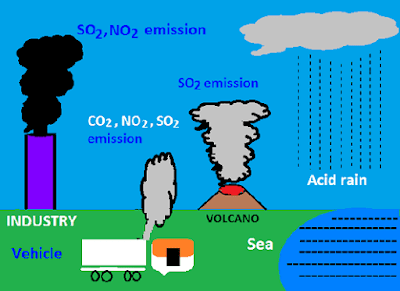




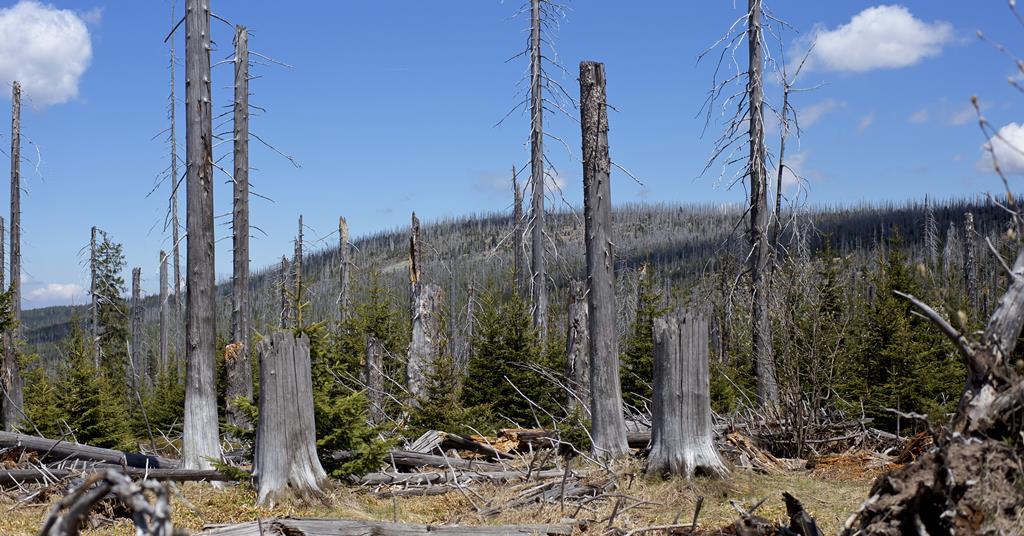

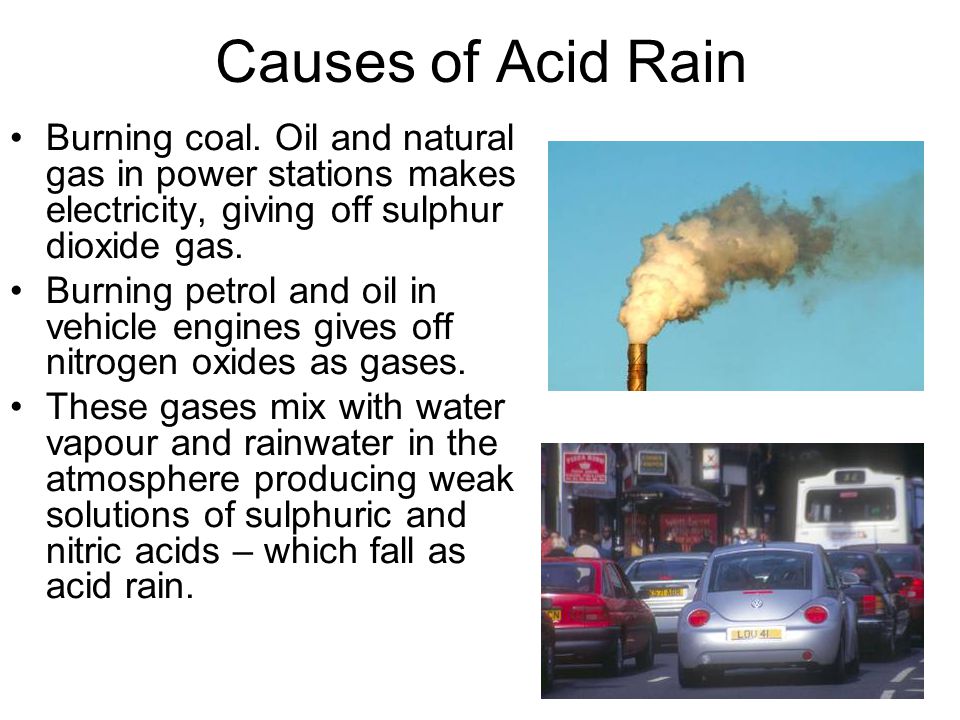


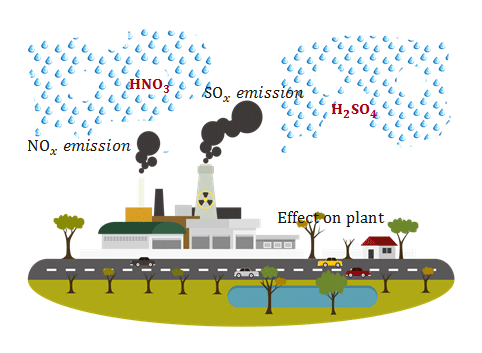

/cloudfront-us-east-1.images.arcpublishing.com/gray/6FU2D4CTCBFOZN2MZEIJZXYQUE.png)



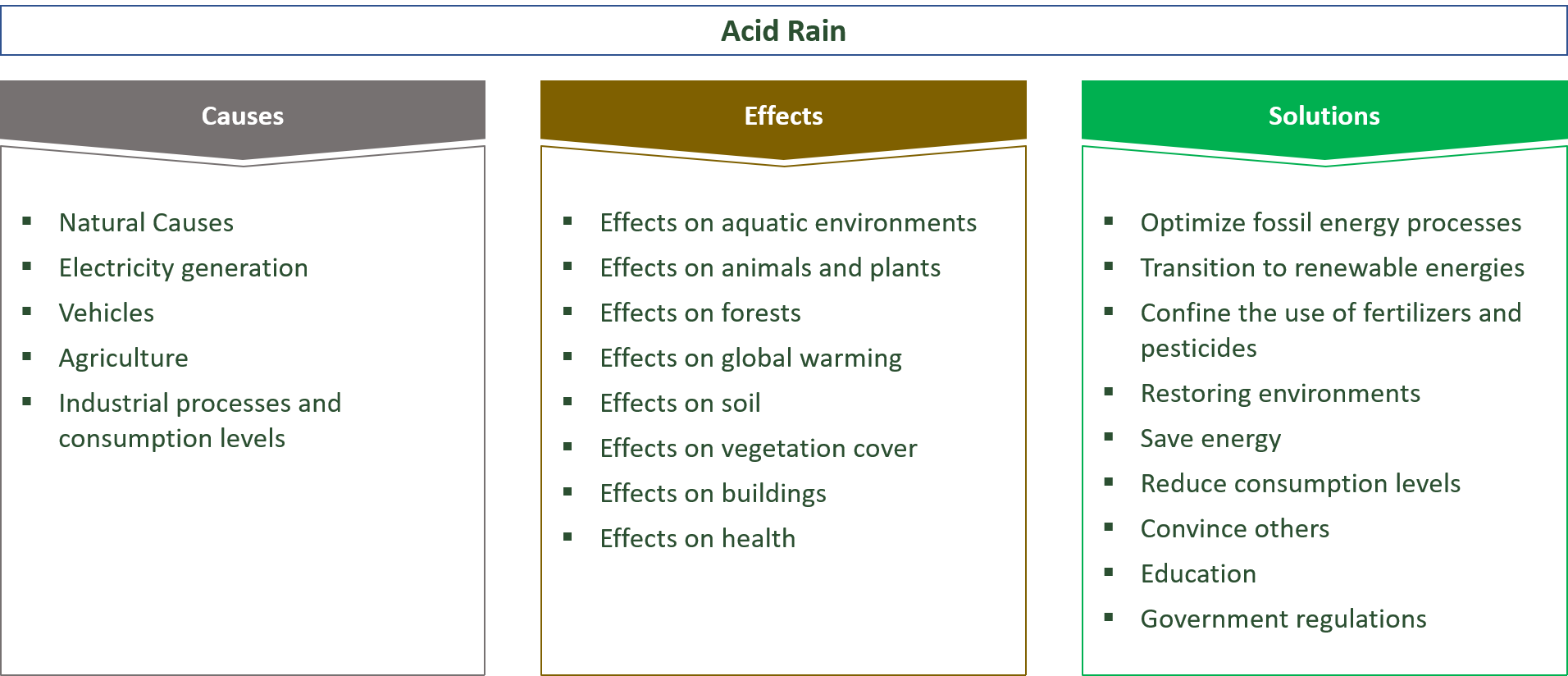

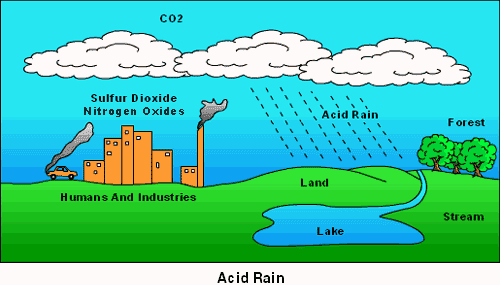
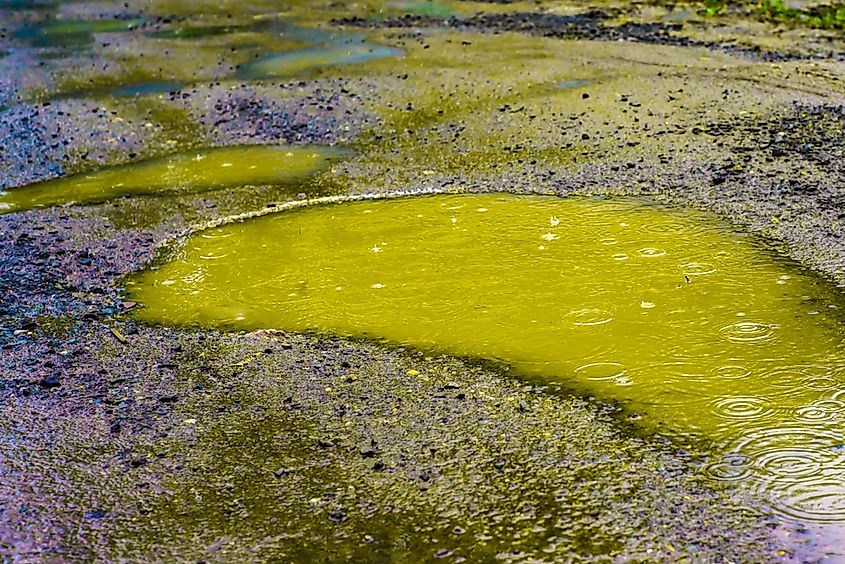
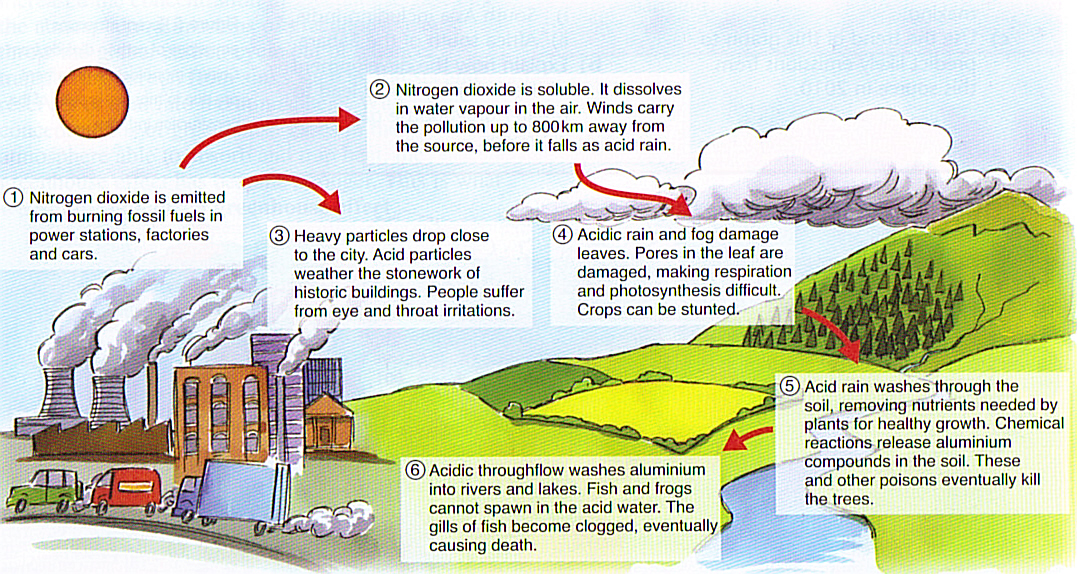

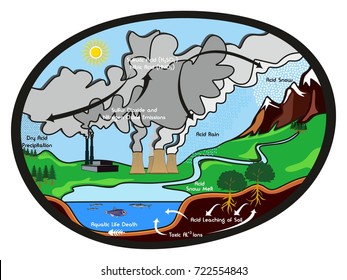

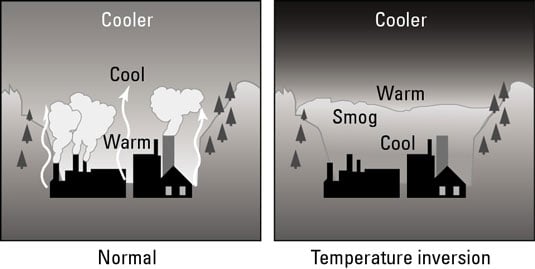




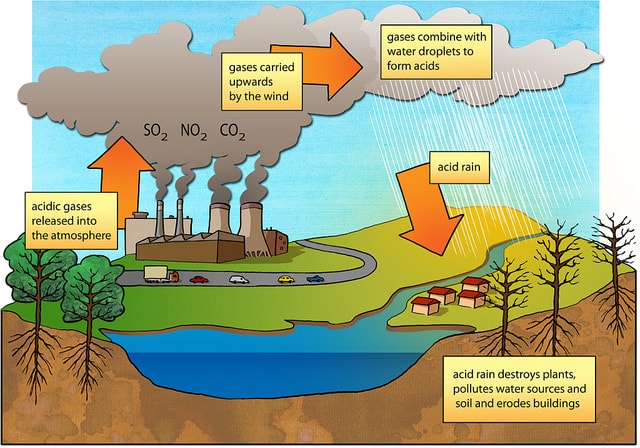


/cloudfront-us-east-1.images.arcpublishing.com/gray/NUVKHAYMDREA5E3YJ2O3RT4LKA.jpg)


0 Response to "43 what causes acid rain"
Post a Comment